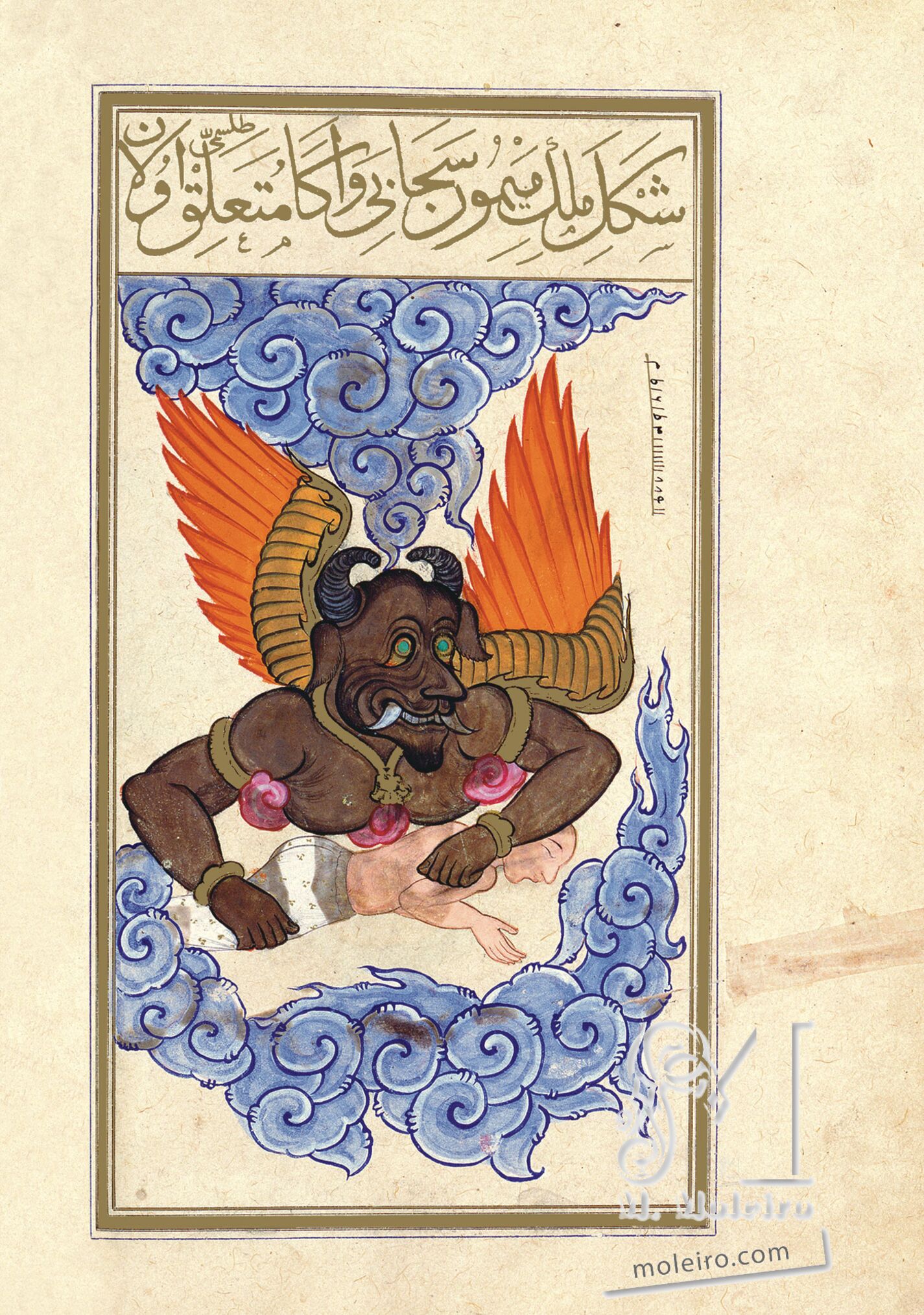Maymun is the king of Sunday according to most authors, the day of the Sun, and is associated with the angel Rufaya’il and gold. He is the only king of the demons who has wings and is indeed described as “Maymun of the Clouds”. This is in fact a bit confusing because he is not an underground creature like the rest of the jinns.
Depicted between sets of lively clouds of Chinese inspiration, the demon’s upper body is shown with the same muscular body, armbands, bracelets and collar as Zawbaca (f. 85r). He has large open wings with gold and red feathers, red flames under his body and a monstrous head with a pointed beard, tusks, green eyes, goat ears and bovine horns. He holds in his hands, suspended in the air, the half-naked body of a sleeping man, perhaps to emphasize his demonic powers as a kidnapper of human beings. An Arab author of magical treatises, al-Buni, describes Maymun as “the winged one”, “the black one” and “the executioner”, perhaps meaning that he only kidnapped and executed evil human beings.
Stefano Carboni
The Metropolitan Museum of Art
Curatorial Assistant in Islamic Art
(Fragment of the Book of Felicity commentary volume)
